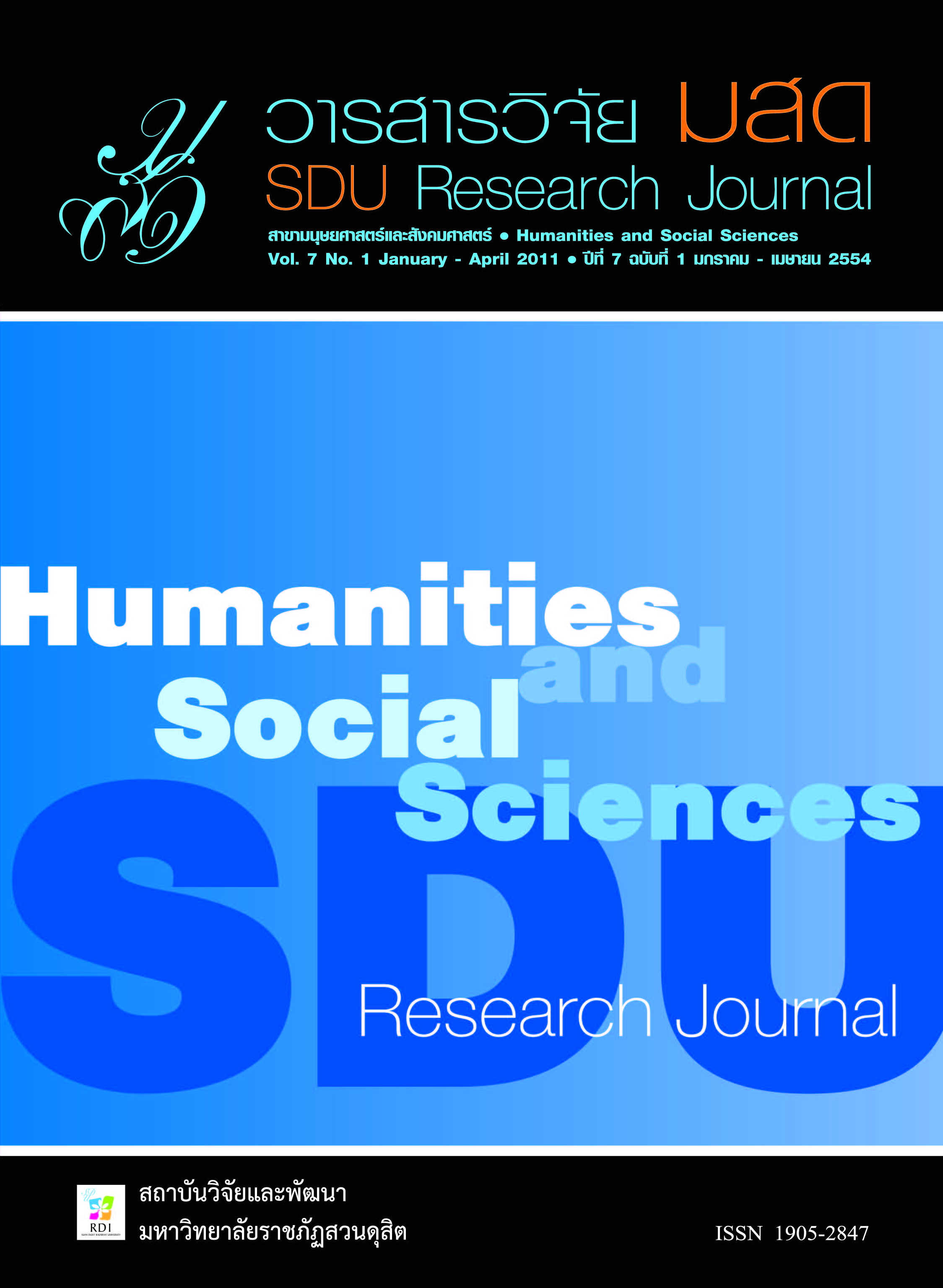การพัฒนาโมเดลเชิงสาเหตุของแรงจูงใจในการสอบและคะแนนสอบวิชาคณิตศาสตร์ของนักเรียนมัธยมศึกษาปีที่ 3
Keywords:
TEST-TAKING MOTIVATION, EXPECTANCY-VALUE THEORY, SELF-DETERMINATION THEORY, CAUSAL MODELAbstract
บทคัดย่อ
การวิจัยครั้งนี้มีวัตถุประสงค์เพื่อ (1) ศึกษาและเปรียบเทียบระดับแรงจูงใจในการสอบ และคะแนนสอบของนักเรียนที่ได้รับเงื่อนไขการสอบแตกต่างกัน (2) พัฒนาและตรวจสอบความสอดคล้องของโมเดลเชิงสาเหตุของแรงจูงใจในการสอบและคะแนนสอบของนักเรียน กลุ่มตัวอย่างเป็นนักเรียนมัธยมศึกษาปีที่ 3 จำนวน 2, 077 คน ผลการวิจัยสรุปได้ดังนี้
1) คะแนนสอบวิชาคณิตศาสตร์ของนักเรียน อยู่ในระดับต่ำ ระดับแรงจูงใจในการสอบ อยู่ในระดับมาก นักเรียนที่ได้รับการส่งเสริมแรงจูงใจ มีค่าเฉลี่ยแรงจูงใจในการสอบและคะแนนสอบ สูงกว่านักเรียนที่ไม่ได้รับการส่งเสริมแรงจูงใจ
2) โมเดลเชิงสาเหตุของแรงจูงใจในการสอบและคะแนนสอบของนักเรียนสอดคล้องกับข้อมูลเชิงประจักษ์ ค่าดัชนีความสอดคล้องของโมเดลมีดังนี้ = 131.911, df = 49, =.000, CFI = .992, TLI = .986, RMSEA = .029, SRMR = .023
3) คะแนนสอบวิชาคณิตศาสตร์ของนักเรียน ได้รับอิทธิพลทางตรง และอิทธิพลรวมสูงสุด จากเจตคติต่อวิชาคณิตศาสตร์ แรงจูงใจในการสอบ ได้รับอิทธิพลทางตรง และอิทธิพลรวมสูงสุด จากคุณค่าของการสอบ
Abstract
The objectives of this research were (1) to examine levels and compare the averages of test-taking motivation, levels of test scores of students under various test conditions; (2) to develop and validate a causal model of test-taking motivation and test scores. The samples were 2,077 grade nine students. Major findings were as follow:
1. The averages of Mathematics test scores were low. The averages of test-taking motivation were high. It was also found that averages of test-taking motivation and test scores for autonomy support group were higher than non-autonomy support group.
2. The causal model of test-taking motivation and test scores was fitted to the empirical data. The model indicated that = 131.911, df = 49, =.000, CFI = .992, TLI = .986, RMSEA = .029, SRMR = .023.
3. Mathematics test scores of students received the highest direct effect and total effect from attitude towards Mathematics, and test-taking motivation of students received the highest direct effect and total effect from values of tests.
Keywords : TEST-TAKING MOTIVATION; EXPECTANCY-VALUE THEORY; SELF-DETERMINATION THEORY; CAUSAL MODEL







